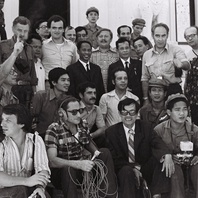
Featured Item
Soldiers and foreign visitors with Heng Samrin and Pen Sovan
This picture shows a group of soldiers and foreign visitors (including journalists) surrounding Heng Samrin (chairman of the People’s Revolutionary Council of the PRK) and Pen Sovan (Secretary-General of the Kampuchea People’s Revolutionary Party). The presence of foreign press and visitors might indicate that the photograph was taken in Phnom Penh at the time of the People’s Revolutionary Tribunal that prosecuted in absentia the ‘Pol Pot-Ieng Sary clique’ for genocidal crimes (15-19 August 1979). This photograph is part of the collection held by the Agence Khmère de Presse (AKP) and Cambodia’s Ministry of Information. This collection, which documents the early years of the People’s Republic of Kampuchea as photographed by the Vietnamese and a small team of Cambodian photographers, has not yet been classified or indexed.
Read More
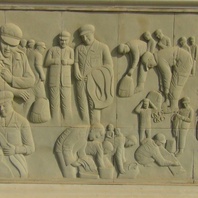
Item
Win-Win Monument bas-relief
This photograph provided a view of bas-relief on the 117-metre-long engraved base of the Win-Win Monument. It depicts the defection of Khmer Rouge soldiers to the Cambodian government. The soldiers are represented donning the uniform of the Royal Cambodian Armed Forces and sitting in rows in ceremonies organised by government officials. The Win-Win Monument complex – photographed here in January 2020 – was inaugurated in December 2018 to mark the twentieth anniversary of the end of the post-Democratic Kampuchea civil war, with the final defection of the remaining Khmer Rouge factions, thanks to the DIFID policy (“Divide, Isolate, Finish, Integrate, Develop”) also known as the “Win Win” policy of Prime Minister Hun Sen.
Read More
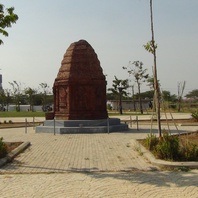
Item
Replica of Koh Ker Tower, Win-Win Monument
This photograph shows a miniature reproduction of a red-brick tower at Koh Ker (former capital of the Angkorian Empire). A garden located on the northern side of the Win-Win Monument displays several miniature reproductions of iconic Khmer monuments. The Win-Win Monument complex – photographed here in January 2020 – was inaugurated in December 2018 to mark the twentieth anniversary of the end of the post-Democratic Kampuchea civil war, with the final defection of the remaining Khmer Rouge factions, thanks to the DIFID policy (“Divide, Isolate, Finish, Integrate, Develop”) also known as the “Win Win” policy of Prime Minister Hun Sen.
Read More
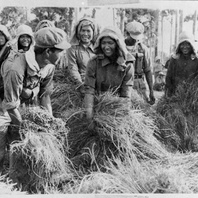
Featured Item
Soldier helping with harvest
This staged and unattributed photographs shows a soldier of the Kampuchea United Front for National Salvation (KUFNS, also known as FUNSK) [Front or Renakse] helping a group of women to harvest crops. In the foreground, the soldier, with his rifle on his back, makes a large sheaf. He looks at the woman on his left. This photograph is part of the collection held by the Agence Khmère de Presse (AKP) and Cambodia’s Ministry of Information. This collection, which documents the early years of the People’s Republic of Kampuchea as photographed by the Vietnamese and a small team of Cambodian photographers, has not yet been classified or indexed.
Read More
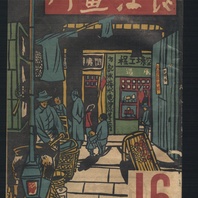
Page
About COTCA
In this section, you will find details about the COTCA Digital Archive which is housed on this site, as well as about the COTCA Project itself. Details can also be found on how best to search the Digital Archive. About the COTCA Project About the Digital Archive Meet the Team Using Search
Read More
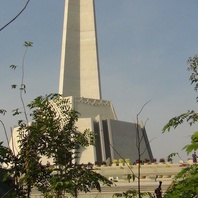
Item
Win-Win Monument
The Win Win Monument obelisk (33 metres in height) – photographed here in January 2020 – is part of a monumental complex inaugurated in December 2018 to mark the twentieth anniversary of the end of the post-Democratic Kampuchea civil war, with the final defection of the remaining Khmer Rouge factions, thanks to the DIFID policy (“Divide, Isolate, Finish, Integrate, Develop”) also known as the “Win Win” policy of Prime Minister Hun Sen.
Read More
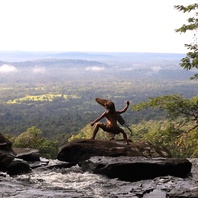
Essay
Bodies of Occupation: Conversation with Shaq Koyok
This conversation with artist/activist Shaq Koyok will cover art and the issues faced today by Indigenous communities in Malaysia (including land rights, deforestation, poverty, racial discrimination and religious conversion). Participants Gaik Cheng Khoo obtained her BA (English) from The University of Texas (Austin), then she moved to Canada for her MA (English) and PhD (Interdisciplinary Studies) at the University of British Columbia. She spent two years as a postdoctoral fellow at the Asia Research Institute (ARI-NUS) in Singapore in 2004-05, where she built up invaluable networks in the region before becoming a lecturer at the Australian National University, where she taught gender, cultural studies and Southeast Asian cinema (2005-2012). She is currently the Director of the University of Nottingham Asia Research Institute, Malaysia. Gaik’s work focuses on cinema and independent filmmaking in Malaysia; cosmopolitan spaces including public eating places like kopitiam and mamak stalls; race, religion and the politics of identity; multiculturalism and food. She is focusing on Korean migrants in Malaysia as exemplary of generational and attitudinal changes among South Koreans. As transnational migrants on the move for studies, work, play, or retirement, they register in complex, layered and sometimes contradictory ways, a kind of resistance to traditional stereotypes of South Korean middle class aspirations and status. Gaik is interested in how temporality, modernity and happiness figure in their migration and settlement. Her most recent research is on a political economy of the Malaysian durian, focusing on the supply chain. Shaq Koyok (b. 1985 Kampung Pulau Kempas in Banting, Selangor, Malaysia) is a contemporary artist from the Indigenous Temuan tribe of Selangor. He started painting with oil pastels at five years of age to express his feelings. He went on to pursue Fine Art at Universiti Teknologi MARA. In was the trauma of watching land developers encroaching onto the jungle around his village and plundering the forest in the 1990s and early 2000s that fueled his passion for art and activism. Shaq produces works that reflect his growing concern about the world, environmental degradation and the fate of the Orang Asli people (which translates as “Original People”) in Malaysia. Specialising in portraits, his work has been shown in Britain, Australia and the United States, as well as Malaysia. In 2017, Shaq won the Merdeka Award for International Attachment. Simon Soon is a Senior Lecturer at the University of Malaya in Kuala Lumpur. He researches across of a range of interests in modern and contemporary art and architecture in Southeast Asia, further to completing a PhD at the University of Sydney, which examined left-leaning political art movements in the region from the 1950s to the 1970s. He was a participant in “Ambitious Alignments: New Southeast Asian Art Histories”, funded by the Getty Foundation’s Connecting Art Histories initiative and is currently a co-investigator for the project “Decolonial Art Histories of Southeast Asia” funded by a British Academy Newton Mobility Grant. Simon is co-editor of Narratives in Malaysian Art Vol. 4 and a member of the editorial collective of the journal Southeast of Now: Directions in Contemporary and Modern Art in Asia.
Read More
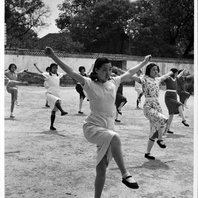
Item
Danish gymnastic [sic]
From a collection of staged photographs produced under the title “Life at a Girls School in Peking”, and produced at the Peking Jiyu Gakuen in Japanese-occupied Beijing. The original caption reads: “Some graduate of the Jiyu Gakuen were sent to Danmark [sic] in order to study the gymnastics, and now the Chinese girls are given the new type of physical training in China [sic]”. “Danish gymnastics” was a form of mass athletic exercise popular in Europe in the inter-war period.
Read More
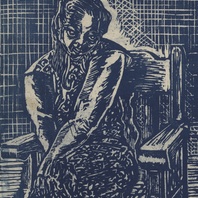
Item
Furen xiang (Portrait of a woman)
This woodcut, by an artist called Ma Wu (probably the most prolific of Chinese popular artists openly active during the Japanese occupation), was reproduced in Zhonghua huabao (Chinese Pictorial) 2.2 (March 1943). The importance of the muke (woodcut) form to artistic practice in occupied China has been almost entirely overlooked in the literature. The muke form has hitherto been associated with the art of resistance in China, despite being an important part of “occupation” visual cultures as well.
Read More
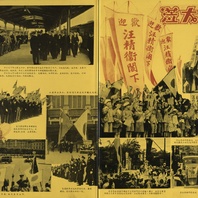
Item
An di Dongjing; li dashiguan (Arriving safely in Tokyo; visiting the embassy)
This photomontage is taken from Huang Qingshu (ed), Wang zhuxi fang Ri jinian huakan (Special pictorial in commemoration of Chairman Wang’s visit to Japan) (Nanjing: Xuanchuanbu, 1941). It includes images of Wang Jingwei arriving in Tokyo during his 1941 visit to Japan, and specifically his visit to the RNG embassy in Tokyo.
Read More
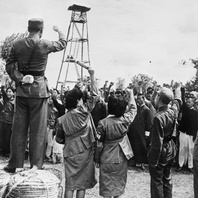
Item
Rural Pacification cadres rousing peasants
Photograph of members of the RNG Central Propaganda Group’s Number 2 Rural Pacification Propaganda Team leading a rural audience in the shouting of slogans. The photograph was possibly produced by the RNG’s Central News Agency. Note the watchtower in the background flying the Nationalist Chinese flag, suggesting this photograph was taken in a “pacified village”.